Artists' Books
Artists' Books

God Made My Face: A Collective Portrait of James Baldwin
Baldwin's life and legacy as remembered by a pantheon of artists and writers: from Jamaica Kincaid and Barry Jenkins to Richard Avedon and Alice Neel.
When author James Baldwin died in 1987, he left behind an extraordinary body of work: novels, poems, film scripts and, perhaps most indelibly, essays. A friend and supporter of Martin Luther King Jr., Malcolm X and Medgar Evers, Baldwin was a critical voice in the civil rights movement. After reaching acclaim in his early career as a writer, he struggled to retain the author's "I," while taking on the "we" of the people.
Edited by Pulitzer Prize-winning author Hilton Als and growing out of his landmark exhibition at David Zwirner in 2019, God Made My Face brings together an impressive assembly of contributors, ranging from Baldwin biographer David Leeming to novelist Jamaica Kincaid and Moonlight director Barry Jenkins, to create a memorial mosaic: one that not only mirrors Baldwin's various tones but also closely examines his singular contributions to cinema, theater, the essay and Black American critical studies. These essays are illustrated by artwork from modern and contemporary artists who were either personal contemporaries of Baldwin or directly inspired by his work. In each piece assembled here, the authors speak from a personal, informed perspective, illuminating Baldwin's deeply anguished and enlightened voice and his belief that, ultimately—because we are human—we share the potential to love, connect and live together in all our glory.
Artists include: Diane Arbus, Eugène Atget, Richard Avedon, Don Bachardy, Alvin Baltrop, Anthony Barboza, Njideka Akunyili Crosby, Beauford Delaney, Marlene Dumas, Glenn Ligon, George McCalman, Alice Neel, Elle Pérez, Cameron Rowland, Kara Walker, James Welling, Larry Wolhandler.
Authors include: Stephen Best, Daphne A. Brooks, Teju Cole, Marianne Jean-Baptiste, Barry Jenkins, Jamaica Kincaid, David Leeming, Darryl Pinckney.

DEARS No. 3 RE.SONATE
Robert Steinberger, Delphine Chapuis Schmitz and 1 more
DEARS is a print magazine for transversal writing practices at the crossroads of art, poetry and experimental writing. It brings together authors and writers from different backgrounds and constitutes a dedicated platform for texts escaping the usual genres and disciplinary boundaries.
DEARS promotes the exploration of new forms of language as a way to foster new forms of living together, and emphasizes the growing relevance of trans- versal writing practices in this respect.
Issue no. 3 / Winter 2021 / RE.SONATE
With texts by Meloe Gennai, Livia Johann & Anne Sylvie Henchoz, Rahel Kraft, Sanna Marander, Dominic Oppliger, Dominique Petitgand, Sarah Riggs, Cia Rinne, Axelle Stiefel & Sanna Helena Berger, Niklas Tafra, Salomé Voegelin and an epigraph by Frantz Loriot.
Editors are Delphine Chapuis Schmitz, Nicole Bachmann and Robert Steinberger
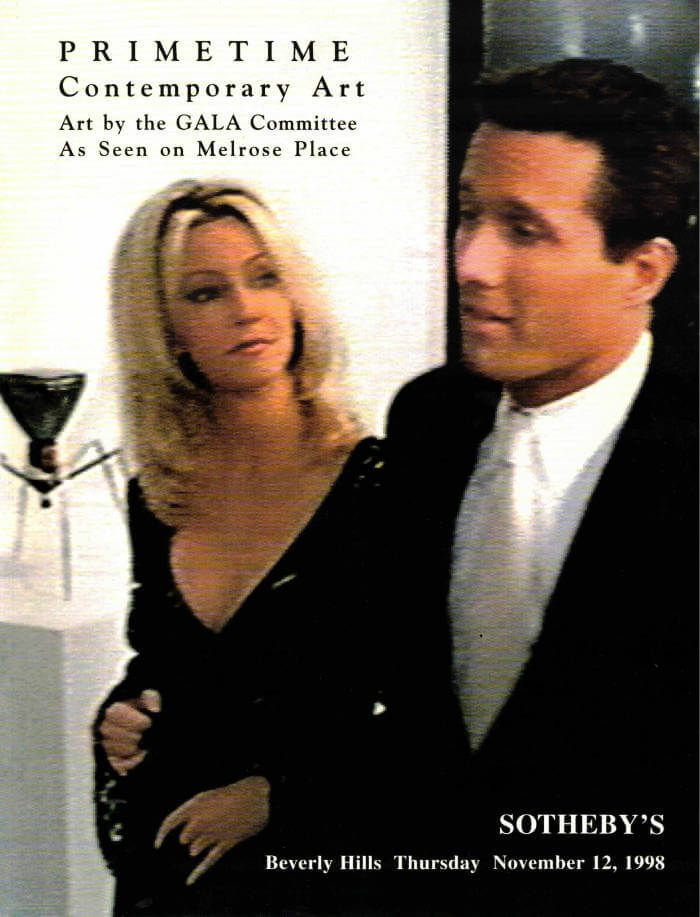
Primetime Contemporary Art: Art by the Gala Committee as Seen on Melrose Place
A facsimile of the GALA Committee's mock auction catalog for an artistic intervention into the props and plots of Melrose Place.
Originally published in a limited run in 1998, Primetime Contemporary Art documented In the Name of the Place, a radical two-year intervention by a group of artists, initiated by Mel Chin and known as the GALA Committee, on the primetime television show Melrose Place. This extremely rare artist's book is reproduced for the first time as a facsimile edition.
The artists comprising the GALA Committee worked with the producers of Melrose Place to develop a series of political works that were used as props and plot devices across two seasons of the show, providing surreptitious commentary on reproductive rights, HIV/AIDS, the Gulf War, domestic terrorism, corporate malfeasance and substance abuse. Some of these topics were banned by the FCC at the time, and the group's works allowed for the artists and the show to create political commentary that went unnoticed by censors. The artworks they produced were exhibited at the Los Angeles Museum of Contemporary Art in 1997 and then sold at an auction at Sotheby's to support several charities. Primetime Contemporary Art was created by Mel Chin and Helen Nagge as a mock auction catalog documenting the artwork made for the show and the conceptual framework of the GALA Committee.

Épopées Célestes / Epopee celesti
Gustavo Giacosa, Barbara Safarova
A veritable panorama of Art Brut at an international level, through 180 works selected from Bruno Decharme's collection.
Art brut has never ceased to shake up the history of art and nourish minds resistant to norms as it questions classic notions of art and creation as well as those relating to the normal and the pathological. But who are they, these artists of a special kind, witnesses to another world, strangers to stylistic trends and influences? They stay—or are kept—away from the culture of fine art as well as the codes and places that constitute it such as schools, academies, museums, art fairs, etc.
Featuring A.C.M., Noviadi Angkasapura, Anselme Boix-Vives, Marie Bodson, Giovanni Bosco, Gustavo Enrique Buongermini, Aloïse Corbaz, Fleury-Joseph Crépin, Egidio Cuniberti, Henry Darger, Fernand Desmoulin, Janko Domsic, Dong-Hyun Kim, Jaime Fernandes, Eugen Gabritschevsky, Pietro Ghizzardi, Madge Gill, Paul Goesch, Jorge Alberto Hernández Cadi, Paul Humphrey, Zdeněk Košek, Joseph Lambert, Gustave Pierre Marie Le Goarant de Tromelin, Augustin Lesage, Pascal Leyder, Alexander Pavlovitch Lobanov, Ramon Losa, Dwight Mackintosh, Lázaro Antonio Martínez Durán, Mettraux, Edmund Monsiel, John Bunion Murray, Iwona Mysera, Koji Nishioka, Masao Obata, Jean Perdrizet, M. Pierron, Photographies Spirites, Miloslava Ratzingerová, Marco Raugel, Achilles G. Rizzoli, Leopold Strobl, Harald Stoffers, Mose Tolliver, Melvin Way, Scottie Wilson, Adolf Wölfli, Anna Zemánková, Carlo Zinelli, Unica Zürn.

Martin Wong: Footprints, Poems, and Leaves
Self-published in 1968, Footprints, Poems, and Leaves collects dozens of poems written by Martin Wong between 1966 and 1968. Hand-written in a signature calligraphic style that he was just beginning to develop, the poems ebb and flow visually across the page, much like the fluctuating characters, scenes, and moods that inhabit them. This was Wong’s first book of poetry and it contains a double cover showcasing intricate drawings of skeletal angels and other tableaux, as well as a folded, looseleaf broadsheet containing two poems and a drawing of a boney leaf.
The poems were written during a relatively free period for the artist, shortly after he dropped out of Berkeley and began exploring San Francisco at the height of the hippy movement. The poems range from surrealist and pastoral descriptions of the urban subculture that surrounded him to downtrodden, travel-weary biographical entries that are both lonely and tender. Footprints, Poems, and Leaves functions like a journal capturing Wong’s tumultuous life in this period, which included being arrested at a queer, drug-fueled house party (along with Rudolf Nureyev and Dame Margot Fonteyn) and a stay in a mental institution in late 1967 and early 1968. Around the time of the book’s publication, Wong enrolled in Humboldt State University to finish his degree, beginning a new chapter for the artist.
Despite the dark backdrops of many of the works, the writing displays a playfulness with form and language and a sense of humor that can be seen throughout Wong’s later work as well. Altogether, Footprints, Poems, and Leaves creates a rich tapestry of visual poetry that is both a product of its time and the budding artistic mind of a young Martin Wong.
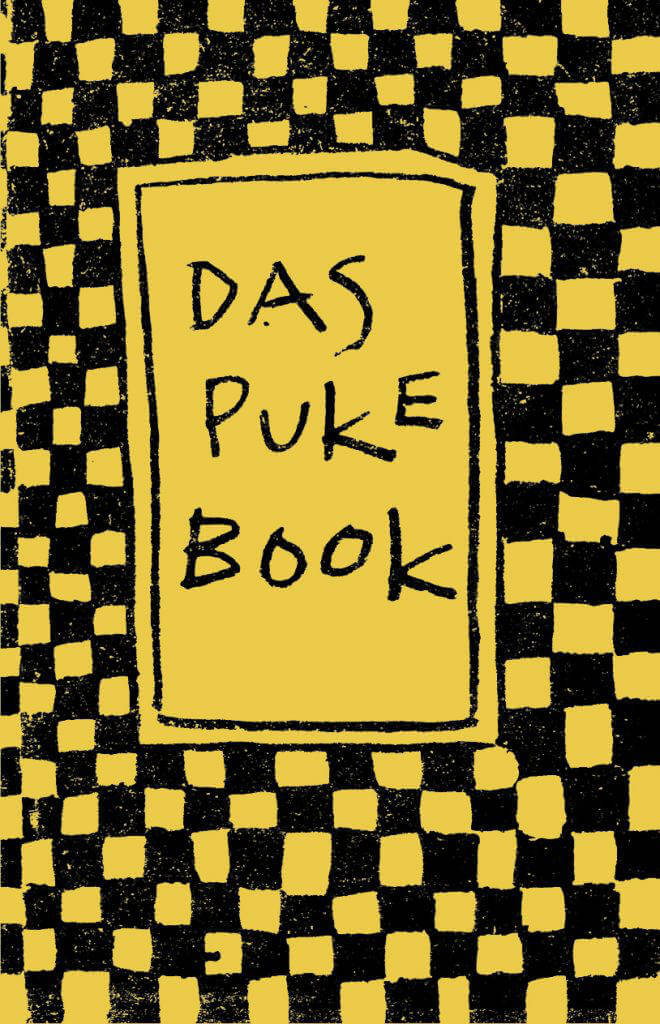
Martin Wong: Das Puke Book
Das Puke Book is a small chapbook self-published by Martin Wong in 1977. Written in the early 1970s, the publication contains thirteen chapters of handwritten micro-fictions filled with cringeworthy stories unfolding in San Francisco and beyond.
Subtitled Da Otto Biography of Otto Peach Fuzz, the publication is populated with a cadre of colorful characters, some of who are obscure underground figures such as George “Hibiscus” Harris from the Cockettes and Angels of Light and Rodney Price and Debra “Beaver” Bauer from Angels of Light, while others such as Paul Gauguin, Vincent van Gogh, and God, are more well known. Although lighthearted, Wong paints unforgettably vivid scenes, such as Van Gogh attacking Gauguin with a razor, Beaver eating so many hot dogs she explodes, and God coming to San Francisco only to find a notebook that makes him so sick to his stomach that he vomits endlessly until the world ends. Written during his days working on the flyers and theatrical backdrops for the Angels of Light Free Theater and published just before his move to New York, these stories capture Wong’s playfulness and the absurdist, kaleidoscopic milieu of the moment in which they were written.
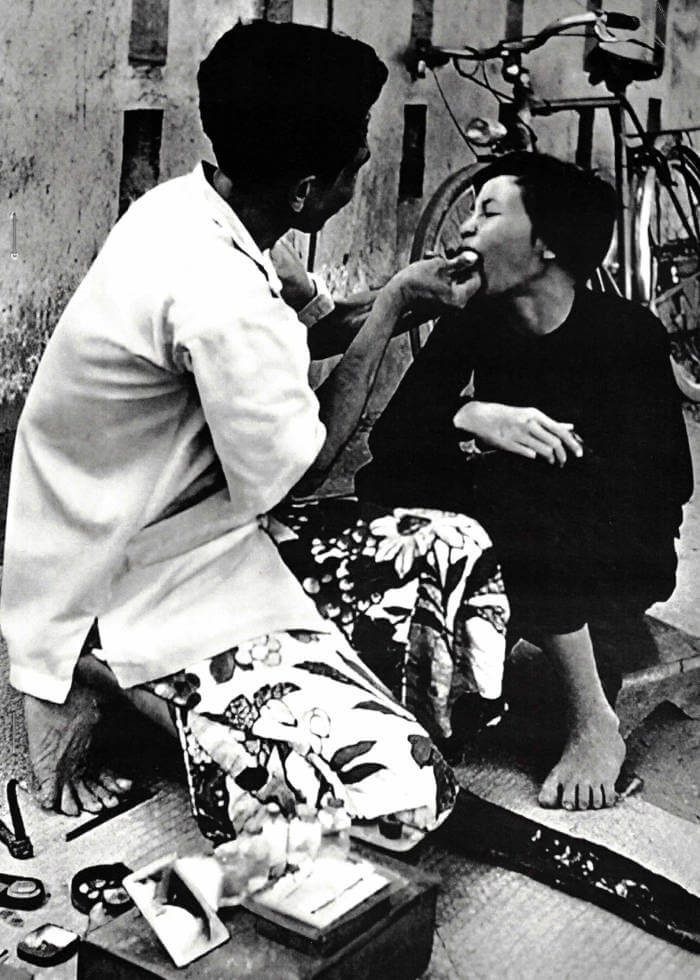
Teeth Surrounding a Flower in the Meanings
In ‘Teeth Surrounding a Flower in the Meanings’ a compilation of texts from the critical discourse surrounding his work, written by various authors between 2016 and 2023, serves as source material for a series of erasures.
Through retro- and introspectively reading into the works and the practice at large from poetic angles, these poems investigate the relation between art and its discourse, the words used, and their edges.

Walking loaves
An artist book by Luca Trevisani, overwriting in the mode of a palimpsest Piero Camporesi's Bread of Dreams, an Italian cult classic of "food" anthropology.
Walking loaves is a cannibalization of and tribute to Bread of Dreams, the masterpiece by Italian philologist, anthropologist, and literary critic Piero Camporesi. Originally published in 1980, Bread of Dreams is a book about bread as a cultural entity, about the baking practices and the rituals of the humans we have been, and the way we used to feed ourselves.
Seeking to crystallize in his sculptures the act of walking and the metamorphosis of the body, Luca Trevisani has dedicated several shoemaking exercises to bread—emphasized as a collective glue, material history, and biological writing.
After three years of plastic and editorial research on bread, Trevisani pays homage to Camporesi, grafting images of his works and handwritten notes onto its anastatic replica: a mutation grew in the crevices of another book with a gentle-aggressive gesture.
Luca Trevisani (born 1979 in Verona, lives and works in Berlin and Bologna) is one of the young Italian artists who came to prominence at the international level. His research ranges between sculpture and video, and cross border disciplines such as performing arts, graphics, design, cinema of research or architecture.

Reality (Dark) Fragments (Light)
This monograph covers more than fifty years of creation by Art & Language, whose artists are at the origin of conceptual art. Through unpublished texts by Matthew Jesse Jackson and Art & Language, a transcript of their opera libretto Victorine, and an interview with the artist collective, this publication questions their journey, and more broadly, the relationship between contemporary art and conceptual art.
The permanent collection of the Château de Montsoreau – Museum of Contemporary Art has grown to include 800 works from Art & Language. To celebrate this event, the museum produced a major exhibition and a publication titled Reality (Dark) Fragments (Light). The monograph and exhibition look back at 50 years of creation by these critical, provocative, subversive, punk art collective. They question the main issues involved in Art & Language's work: conversation as an artwork, description, transdiciplinarity, crisis in the relationship between the artist, the museum and the art gallery.
Edited by Marie-Caroline Chaudruc.
Foreword by Marie-Caroline Chaudruc.
Text by Matthew Jesse Jackson, interview with Art & Language by Victorine Meurent.

Birthday
Bridget Mullen is the ruler of an unruly roost. Between 2021 and 2023, she gave birth to forty-seven paintings, each twelve-by-nine inches: kin ugly and cute, monstrous, fleshy, repulsive, droopy-eyed, and sneering as they cross the universal threshold into the no less frightening world that awaits. Birthday reunites Mullen's uncanny litter alongside a conversation between the artist and Lucas Blalock.
The paintings in New York-based artist Bridget Mullen's Birthday series utilize two distinct parameters to guide the creation of the iterative works: a vertical orientation at an intimate scale of 12 x 9 inches and a visualization of perhaps the ultimate creative act—the moment of birth. Through this consistent scale and thematic hyper focus, the artist employs endless formal variations in composition, color, and paint application. The result is a series of paintings that share a common structure yet champion individuality.
Contrasting colors provoke a visible tension, one that is at times compressed and, in other moments, elastic. Suddenly, abstract shapes come into focus as human anatomies, capable of expressing emotion. Undulating lines of various thicknesses and layered colors squeeze together, revealing peculiar faces and gestures that emerge from a central point. The repetition of thin lines creates a visual stutter of pigment, alluding to the passage of time or rapid movement.
The works in Birthday build on Mullen's practice, combining color, decisive mark-making, intuition, and experimentation to conjure psychedelic configurations. Sculptural dimensionality and flatness, representation and abstraction, and solidity and fluidity, serve not as dichotomies within these works, but as two complementary halves of a whole. Together, the forms and figures of the Birthday series are imbued with a sense of life, pregnant with agency and potential.

Lavskrift
Lavskrift is an edition written using signs collected from script lichen (graphis scripta). The species grows in shady deciduous forest and has small, black structures that resemble writing characters.
In the book Stahle explores asemic writing: writing where the signs have no reference to a known sound or meaning.
Edition: 300 numbered copies
Printed in Sweden by ByWind
Letterpress printed cover
Open spine binding with black thread

Meriem Bennani: Life on the Caps
Meriem Bennani's Life on the CAPS is the final chapter in her film trilogy of the same name. Set in a supernatural, dystopian future surrounding a fictional island in the middle of the Atlantic Ocean, it is rooted in Bennani’s research and reflections on the histories of island societies, biotechnology, and vernacular music. Layering live-action footage and computer-generated animation, Bennani intuitively adapts editing techniques that evoke documentary film, science fiction, phone footage, music videos, and reality TV. Her one-person exhibition at the Renaissance Society marked the debut of this personal, electric yet melancholic consideration of what it is to live in a state of limbo, and this accompanying book captures the film through a combination of still images and selections from a transcript of the film.
This volume includes essays by Emily LaBarge and Elvia Wilk and transcripts of conversations between Meriem Bennani and: Omar Berrada; Fatima Al Quadiri, Negar Azimi, and Tiffany Malakooti; Amal Benzekri; and Aziz Bouyabrine.

CCA Wattis Institute for Contemporary Arts
Cecilia Vicuña: Word Weapons
This book brings together the Palabrarmas series by the artist, poet, and activist Cecilia Vicuña (b. 1948, Santiago, Chile). A neologism that translates to “word weapons” or “word arms,” Palabrarmas imagine new ways of seeing language. By taking the form of collages, silkscreens, drawings, poems, fabric banners, cut-outs, mixed media installations, and street actions, Vicuña brings together many aspects of her practice in poetry, activism, and visual art, allowing new meanings to emerge. This book presents a range of palabrarmas, created over the past four decades, in color for the first time.
Cecilia Vicuña is an artist, poet and activist currently based between New York and Santiago.

Drum Listens to Heart
Accompanying the 2022 exhibition at Wattis Institute for Contemporary Arts in San Francisco, Drum Listens to Heart reflects on the many ways that percussion exists beyond the framework of music and imagines "the percussive" as an aesthetic, expressive and political form more broadly. The publication includes a new essay by the curator, images of the works in the exhibition by the 25 artists and artist collectives, and short texts by 10 scholars, writers, artists and curators who respond to a single word to create a "glossary" of terms associated with percussion.
Artists include: Francis Alÿs, Luke Anguhadluq, Marcos Ávila Forero, Raven Chacon, Em'kal Eyongakpa, Theaster Gates, Milford Graves, David Hammons, Consuelo Tupper Hernández, Susan Howe & David Grubbs, NIC Kay, Barry Le Va, Rose Lowder, Lee Lozano, Guadalupe Maravilla, Harold Mendez, Rie Nakajima, the Otolith Group, Lucy Raven, Davina Semo, Michael E. Smith, Haegue Yang and David Zink Yi. Live performances by Elysia Crampton Chuquimia, Moor Mother, Nkisi, Nomon, Karen Stackpole, Marshall Trammell and William Winant.
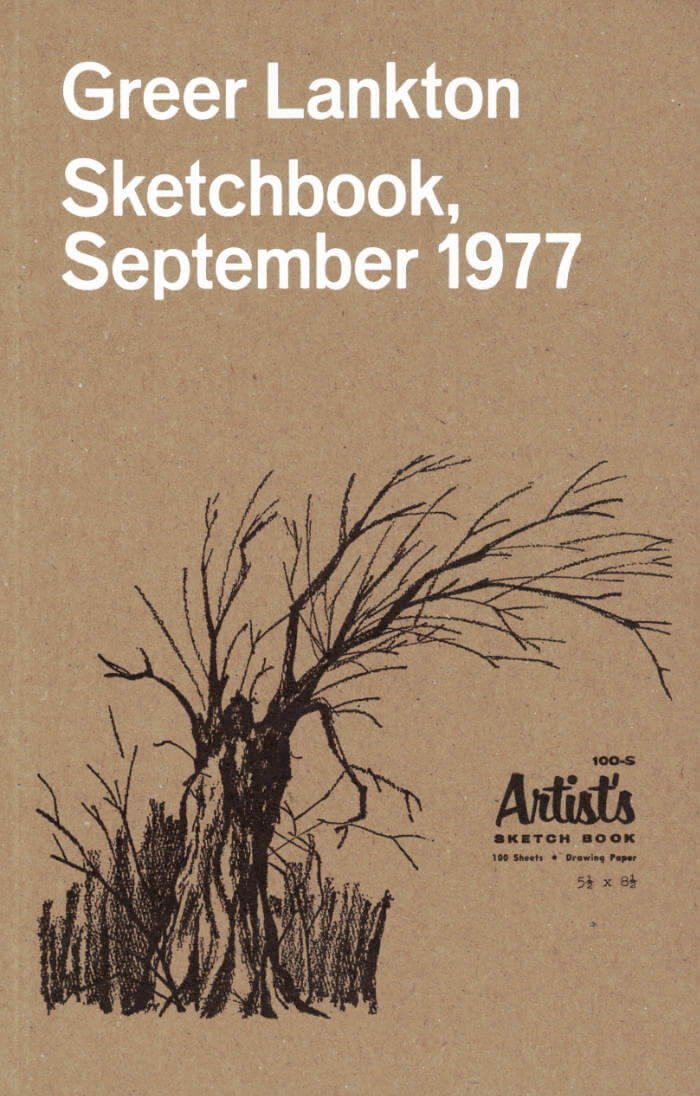
Greer Lankton: Sketchbook, September 1977
A fascinating account of Lankton's inquisitive, sociological and emotional ruminations in advance of her gender-affirming surgery.
This is one of the earliest of Greer Lankton's (1958-96) journals, sketchbooks and daybooks to appear in the artist's archives, and the first to be published in facsimile form. Written during her time as an art student at the School of the Art Institute of Chicago, the journal offers key insights into Lankton's mind at work before her career-defining move to New York in 1978, where she would become an important figure of the East Village art scene in the 1980s and early '90s with her lifelike dolls and theatrical sets.
Containing drawings, behavioral diagrams and aspirational, occasionally confessional writing, the journal is a record of imagining the body and mind reconciled through transformation. In these pages, the 19-year-old turns an inquisitive, sociological eye toward the emotional landscape and somatic effects of the days recorded here; days leading up to her decision to undergo hormone treatment and gender-affirming surgery in 1979. Lankton reflects with raw vulnerability and keen self-awareness on critical questions of self-image, social perception, gender normativity and human behavior.

Fia Backström: COOP: A-Script
COOP documents Swedish artist Fia Backström's (born 1970) performances of two recent scripts, continuing her exploration of language, marketing, disorders and performance. The first script operates according to two distinct logics: a four-part linear base structure and text material that was chosen and read during the performance through chance movement of the performer's body across a grid.
This publication was especially designed to reflect this type of unpredictable and spontaneous movement. Mathematical symbols have been embedded into the text and these symbols link to ones on the upper corner of pages with nonlinear material. These indicate where the text could be inserted during a performance, thus incorporating the form of performance into the book. The second script serves as an epilogue to the first and was performed by four voices, reading from beginning to end without assigned lines, sometimes simultaneously.
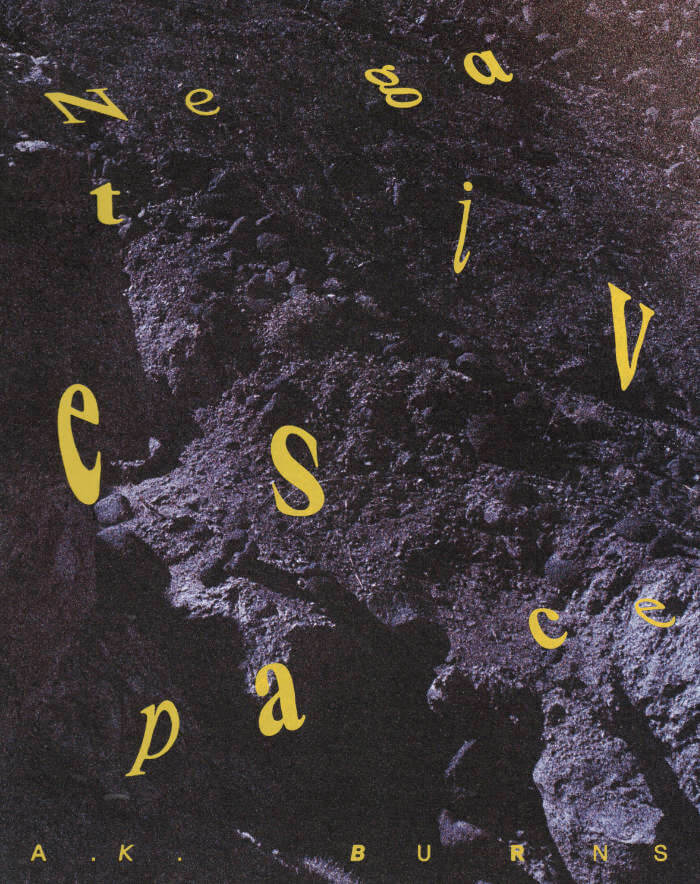
A.K. Burns: Negative Space
Chronicling an epic multimedia project 10 years in the making, A.K. Burns' first monograph grapples with climate change, community and sociopolitical agency
Deploying science fiction, material feminism, eco-anarchism, queer theory and technoscience, New York-based artist A.K. Burns (born 1975) explores the fraught relationships between humanity and nature in an epic multimedia work, Negative Space (2015-23). This nonlinear allegory provokes questions about marginalized bodies, environmental fragility and technology. Developed as a cycle of four video installations, Negative Space imagines new relationships to the spaces we occupy and the impact of our bodies in these spaces through imagery, research and critical and creative writings. Set in a speculative present, the tetralogy envisions a new materialist cosmology wherein hierarchical relations are transformed.
Edited by Karen Kelly and Barbara Schroeder
Text by CA Conrad, Mel Y. Chen, Aruna D’Souza, Megan Hicks, Simone White, and a conversation between the artist and Karen Archey

Act Like You Know Me
The first comprehensive monograph and critical survey of American artist Pippa Garner, Act Like You Know Me surveys fifty years of her radical and transdisciplinary art practice, from the late 1960s to the early 2010s, through ca. 400 photographs, illustration, ephemera, and original writings.
Encompassing Garner's most iconic works, from the Backwards Car to the Half-Suit, alongside never-before-seen photographs and ephemera, Act Like You Know Me serves to introduce a highly-influential, under-recognized artist whose uncompromising approach to life and practice has allowed her to interact with the worlds of illustration, editorial, television, and art without ever becoming beholden to them.
Published on the occasion of Pippa Garner's travelling exhibition at Kunstverein Munich, Kunsthalle Zurich, Frac Lorraine (Metz) and White Columns (NYC).
Born in the suburbs of Chicago in 1942, Pippa Garner (formerly known as Philip Garner) has satirized American-style consumerism for decades, reifying the joys of everyday life and personal liberation along her way. With her prankish sense of humour and conceptual dedication to experimental engineering, she has altered materials of mass production—from Fordism through the pharmacopornographic era—subverting commercial binaries to reveal the transitory nature of material life and her own transpersonal identity.
Edited by Fiona Alison Duncan and Maurin Dietrich.
Texts by Pippa Garner, Shola von Reinhold, Dodie Bellamy, Fiona Alison Duncan.

Jus d'Orange
A dialogue between Camille Henrot's images and Estelle Hoy's texts, a visual and verbal exploration of melancholy, failure, injustice, and hope.
Since late 2021, the artists, united by a close friendship, have been sharing hundreds of images and exchanging thousands of messages via WhatsApp, Instagram, shared Google Docs, voice messages, and live conversations. Result of this correspondence, Jus d'Orange includes a series of Henrot's paintings inspired by Hoy's texts and vice versa.
This editorial project, developed together with the artists, is thus a homage to this mutual and continual contamination between their works, and to the personal and professional relationship between them.
Published on the occasion of the eponymous exhibition at Fondazione ICA Milano in 2023.

Theresa Hak Kyung Cha – Berkeley – 1968
Première publication dédiée à l'œuvre singulière de l'artiste coréenne-américaine Theresa Hak Kyung Cha (1951-1982), à la croisée de la performance, de l'art conceptuel, de la vidéo et de la poésie, dont l'un des motifs principaux concerne sa représentation de l'Histoire, marquée par l'expérience de l'exil et de la migration, de la dislocation temporelle, culturelle, géographique et sociale.
Dans le courant de sa brève vie, Theresa Hak Kyung Cha a produit un travail artistique, littéraire et critique qui en fait une figure exemplaire, même si encore trop méconnue, de l'art contemporain américain. Est ici retracé ce parcours singulier qui se forge à la lumière d'une période exceptionnelle à la fois de l'histoire et de l'histoire de l'art. Theresa Hak Kyung Cha est à Berkeley en 1968, à Paris en 1976, à New York en 1980 et s'engage dans une pratique de l'art et de la pensée où sont brassés les concepts les plus novateurs des théories visuelles ou filmiques, de la philosophie, de la linguistique et de la littérature comparée.
Theresa Hak Kyung Cha, Berkeley, 1968 est aussi une réflexion inédite sur la représentation de territoires culturels déplacés et leur rapport à la mémoire.
Historienne de l'art contemporain, Elvan Zabunyan est maître de conférences habilitée à l'université Rennes 2 et critique d'art. Ses recherches portent sur l'art nord-américain depuis les années 1960 et notamment le tournant 1970 autour des questions raciales et féministes. Elle travaille depuis le début des années 1990 sur les problématiques issues des cultural studies, des théories postcoloniales et des études de genre en cherchant à construire, grâce à ces pensées critiques, une méthodologie de l'histoire de l'art contemporain articulée autour d'une histoire culturelle, sociale et politique. Elle a publié Black is a color, une histoire de l'art africain américain (Dis Voir, 2004), co-dirigé plusieurs livres et a écrit de nombreux articles dans des ouvrages collectifs, des catalogues d'exposition et des périodiques.

Thievery and Songs
Publication accompanying the exhibition Gernot Wieland (08.02.-05.07.2020).
One can summarize Gernot Wieland and his work as an intertwining of the man, the artist, and the artwork. With Gernot, we experience in his artwork and in his presence more of a quiet, constant fascination with what is around him and what has affected or influenced or indeed shaped him sinde his childhood. These impressions - whether quirky memories or indeed tragic experiences and the non-stop grappliing with what has happened - arise in his artwork or in his conversation, whether directly or not. Alongside self-analysis and presentation through his artwork is an analysis of societal norms and indeed repressed aspects of society as it expresses itself, even violently, in hegemonic structures - in the classroom and upon children, for example. From his sketches or film narratives we catch a powerful glimpse upon a concentration of trauma, repression, and guilt placed upon his generation, an Austrian condition manifesting itself in obscene and absurd ways.

Pictograms
A previously unpublished collection of 60 ink pictograms, drawn between 1976 and 1996, originally printed individually as A2 plane prints.
An early progenitor of the artist's book genre, Warja Honegger-Lavater was born in Winterthur, Switzerland in 1913. She worked as an illustrator for the magazine Jeunesse from 1944-1958, and moved to New York shortly thereafter where she began a wonderful series of artist's books.
These books were published between 1962 and 1971, an exceptionally ripe time for artists to turn to the bookform, a time when the most often cited "first" artist's book also appeared, Twentysix Gasoline Stations (1962) by Ed Ruscha.
All of Honegger-Lavater's books are made using the accordion-fold binding. Her aesthetic has been aptly described as "very clean, very Swiss." Each book tells a story, sequentially, like traditional books, but varying from them by rarely using words. Instead she chooses a symbol to represent, for example, a character, as in the red dot standing in for Red Riding Hood in Little Red Riding Hood.

Diary of Dreams
In 2013 Itziar Okariz exhibited Diary of Dreams for the first time. In its original iteration, the artist's daily recollection of dreams took on the form of a cumulative pile of notes.
Eventually, Okariz presented these notes as a vocal performance in which she multiplied the phrases, read the words repeatedly, and even inverted their syntax. The oral deconstruction of the narrative resulted in a fourth rendering of the dreams: the transcription of the performative reading into a book.
Limited edition of 250 numbered copies.
Trained in sculpture and painting at the University of the Basque Country, Itziar Okariz (born 1965 in Donosti-San Sebastian) has lived in New York and Bilbao. She has had solo shows at Sala Rekalde, Bilbao (2008), Singel International Kunstcentrum, Antwerp (2007), MUSAC, León (2014), Kunsthaus Baselland (2017), CA2M, Madrid (2018) and Tabakalera, Donosti-San Sebastian (2018).
Edited by Moritz Küng
